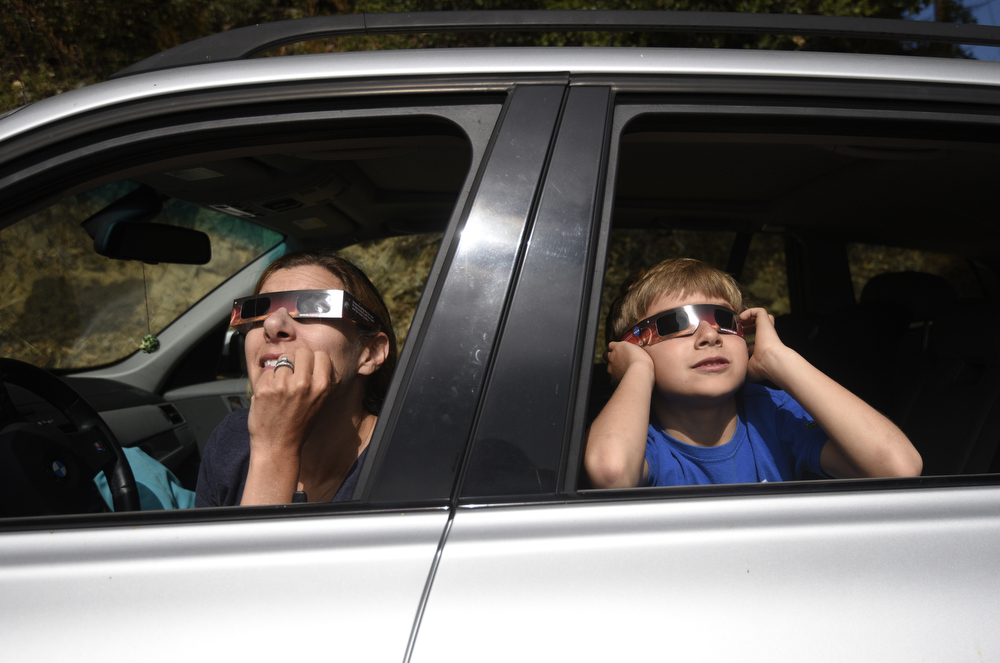Santa Barbara Soaks Up the Great American Eclipse
Over 1,000 Sky-Gazers Crowd Museum of Natural History

More than 1,000 curious sky-gazers showed up this morning at the Santa Barbara Museum of Natural History for the Great American Eclipse, as the moon crossed slowly in front of the sun, peaking at 10:18 a.m. in Santa Barbara with 63-percent coverage.
About an hour before the peak, many waiting in line to get into the museum — discouraged by the persistent marine layer — set out for higher altitudes, equipped with solar-viewing glasses and simple pinhole viewers. But, according to museum staff, blue skies broke through just after 10 a.m. as visitors lined up outside Palmer Observatory and other stations set up for indirect viewing. The museum also live-streamed NASA’s coverage of the event from areas in the path of totality, where the moon completely blocked the sun for about two minutes, creating an approximation of deep twilight.
Meanwhile, a quiet crowd gathered on the rooftop patio at the Moxi children’s museum downtown, staring through free viewing glasses as the partial eclipse periodically burned through patchy skies.


